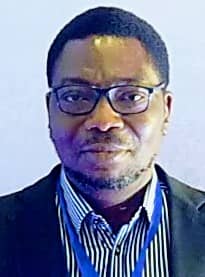Histopathology and Morbid Anatomy
Overview
The department of Histopathology and Morbid Anatomy was carved out from the former Department of Laboratory services in August 2016 by the Medical Director, Dr. O.O Alabi. Hitherto, it existed as a unit of that department, but by this creation, it began to operate as an independent department.
The Department of Histopathology is the main provider of diagnostic histopathological and cytopathological services in the Lokoja metropolis and its environs and acts as a regional reference Centre. We have substantial teaching and research duties.
We have a modest site laboratory, housing automated equipment for use in a wide range of diagnostic methods applied to cells and tissue from patient samples.
Annually, we receive more than 1,000 requests, examine more than 10,000 glass slides by microscopy and perform some molecular analyses. A large part of our diagnostic work involves the investigation and treatment of cancer.
The department employs 3 consultant/staff specialist pathologists, 5 Medical laboratory Scientist, 3 medical laboratory technicians, and 6 mortuary staff members.
Staff
Consultant Pathologists

Dr. Awelimobor D I
Histopathology and Morbid anatomy
Consultant
Dr. Fakeye J A
Histopathology and Morbid anatomy
Consultant
Dr. Fadahunsi O. O
MBCHB, FWACP, FMCPathHistopathology and Morbid anatomy
ConsultantOther Staff
| Name | Role |
|---|---|
| Mrs Uyouko E | Medical Laboratory Scientist (HEAD OF UNIT) |
| Mr Abdulazeez James | Medical Laboratory Scientist |
| Mrs. Bamidele | Medical Laboratory Scientist |
| Mrs Nonye | Medical Laboratory Scientist |
| Mrs Ajayi | Medical Laboratory Technician |
| Mrs Ampitan Flora | Medical Laboratory Technician |
| Miss Yakubu Lois | Medical Laboratory Technician |
| Alkali | Mortuary Attendant |
| Mr Abdulkareem | Mortuary Attendant |
| Mr Alao | Mortuary Attendant |
| Mr Saibu | Mortuary Attendant |
| Mr Adeyeye | Mortuary Attendant |
| Mr Stephen | Mortuary Attendant |
Services
Routine daily tasks involve:
- Cytology
- Diagnostic molecular pathology
- Histology
- Autopsies
Cytology
Diagnoses are made based on the microscopic examination of clinical samples consisting mainly of cells. These cells are obtained either from collected body fluids (e.g. urine or pleural fluid) or by the use of fine-needle aspiration or brushing techniques.
Cytology is widely used as a cancer-screening tool. In addition, being a minimally invasive method, it is well-suited for obtaining material from hard-to-reach lesions or from patients who do not tolerate more invasive methods. We also perform ultrasound guided examinations to secure adequate cytological microscopy and molecular analyses.
Diagnostic molecular pathology
We make use of a wide range of state-of-the-art molecular methods. These allow for a more precise classification of various cancers and enable us to identify specific genetic and epigenetic changes that underlie tumour growth. By combining more precise histological and cytological tumour classification with the molecular analysis of targeted gene panels, it is possible to predict the treatment strategies that are best suited to the individual patient.
Histology
Histopathological diagnosis is based on the microscopic examination of tissue samples, either in the form of small tissue biopsies, or as tissue sections selected macroscopically from large organ specimens removed at surgery. Tissue samples are fixed in formalin and prepared for embedding in paraffin, then cut in thin sections and placed on microscope slides. The slides are then stained to make the cells visible under magnification. At present, the pathologists examine these tissue slides using a traditional microscope; in the future slides will often be digitally scanned and examined on an electronic screen. Digitalization of the slides opens up possibilities for additional analyses based on machine learning/artificial intelligence.
Often, it is necessary to carry out special staining methods. The most important of these staining techniques is immunohistochemistry in which panels of marked antibodies against specific antigens are used to describe tumour or gene specific expression. Knowledge of the marker expression pattern shown by pathological cells or tissues enables more precise diagnosis and may provide prognostic or predictive information of therapeutic value.
If there is need for more rapid diagnosis, it is possible to perform intraoperative frozen section analysis. This may be carried out while the patient is still anaesthetized during an operation, for example to determine whether a cancer has been removed completely, allowing the surgeon the possibility to remove more tissue if necessary. In transplantation pathology, same-day diagnosis is often required, in which case rapid tissue preparation methods can be used, and the pathologist can give a rush diagnosis by telephone.
The mortuary section receives preserves and stores bodies (corpses) both from within and outside the hospital. Autopsy services are performed when the need arises. In the nearest future, we hope to expand our services to cover Immunohistochemistry, museum services/potting of surgical specimen of interest and refrigeration facilities to aid the current embalming technique used in the mortuary for storage of bodies.
Contact
Head of Department
Dr Olatunji Oluwaseyi Fadahunsi
MBCHB, FWACP, FMCPath
HOD, Histopathology and Morbid Anatomy